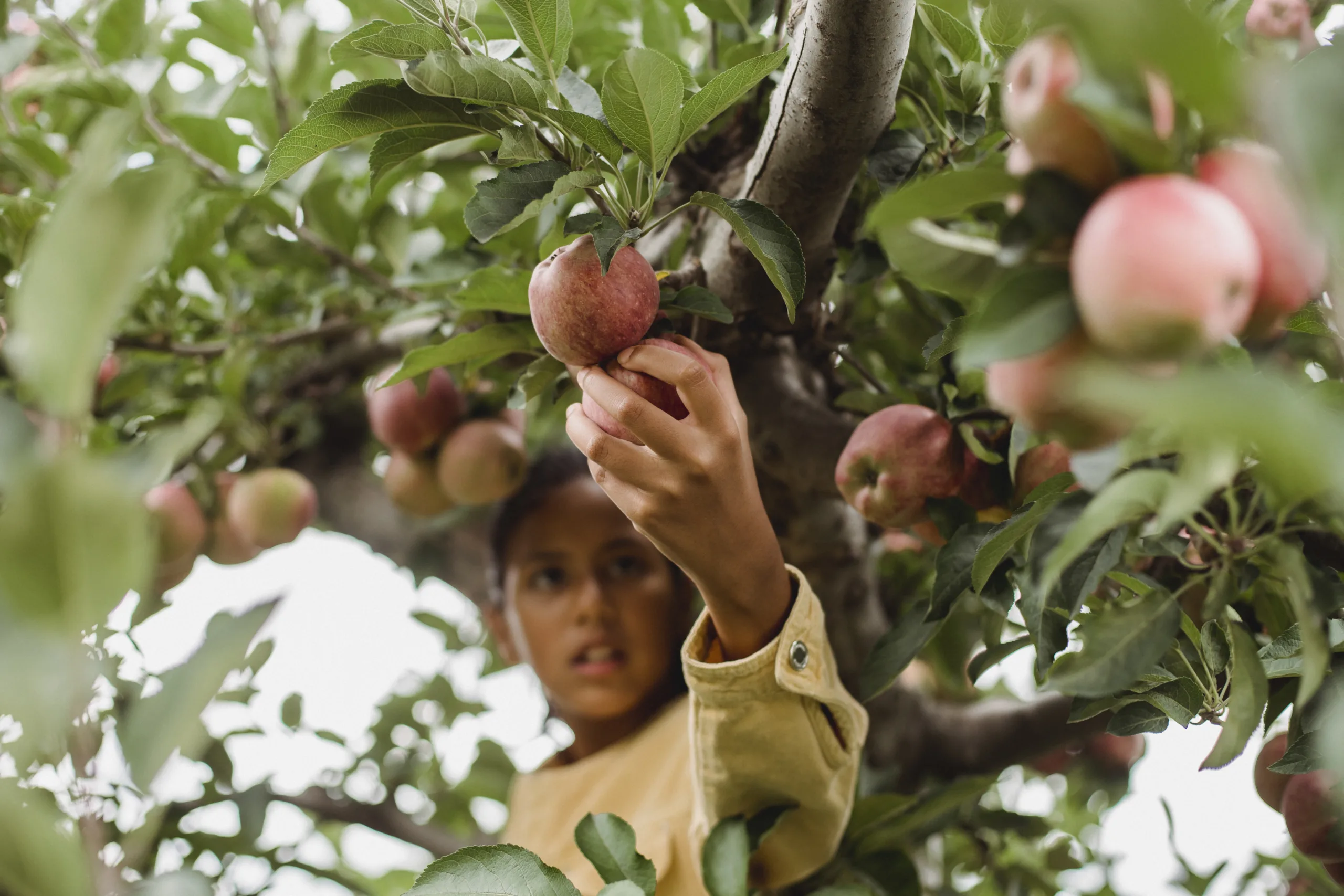Are you considering planting trees to help the environment but worried that planting too many trees might actually be bad for the planet? With so much conflicting information out there, it can be hard to know what to believe. This article will provide an overview of the pros and cons of planting trees, so you can make an informed decision about whether or not it’s a good idea for your situation. We will explore factors such as soil depletion, water availability, and air quality before providing a conclusion on the issue.
The benefits of planting trees are numerous and far-reaching. Trees help to reduce air pollution by producing oxygen and removing carbon dioxide from the atmosphere. They also help to conserve energy since they provide shade in summer and act as windbreaks in winter. Additionally, trees help to improve water quality, protect soil from erosion, and provide habitat for wildlife. Planting trees can also help to reduce noise pollution, increase property values, and create a sense of community.
The Challenges of Planting Too Many Trees
The global effort to plant more trees is admirable, with the ultimate goal of tackling climate change. However, while planting trees can be beneficial in the long-term, it can also have some unexpected and unwanted results if done in too great a quantity. Various challenges can arise when too many trees are planted, particularly in areas that weren’t previously forested or where natural ecosystems are not properly taken into consideration.
One of the primary issues that can arise is the displacement of existing plant and animal life. If an area isn’t properly prepared for tree planting, certain species may be eliminated as a result. This can disrupt delicate ecosystems and cause long-term damage to a region’s biodiversity. Furthermore, if native species aren’t planted, then their unique benefits to the environment may be lost as well.
Another issue is soil erosion. Too much tree planting in one area can put too much pressure on soil resources and lead to erosion over time. Even if plants are well-suited to their environment, they can still cause problems if there is an overabundance of them in one area. This is especially true when it comes to hardwood trees, which require more water and nutrients than other plants.
Finally, planting too many trees in one area can lead to ecological disturbances such as increased flooding and drought. This is because trees act as sponges for water – absorbing moisture during periods of heavy rain and releasing it during dry spells – so an overabundance of them in one place can impact the local water balance. Similarly, increased shade from too many trees can alter temperatures and reduce sunlight exposure for other plants nearby.
Overall, while tree planting efforts are essential for tackling climate change, it is important to ensure that these efforts are done responsibly so as not to create unintended environmental consequences. Proper planning and careful consideration must be taken into account when deciding where and how many trees should be planted in order to ensure the most positive outcomes for both the environment and its inhabitants.
Soil Conditions for Planting Trees
For trees to thrive, they need the right soil conditions. The most important factor is the soil pH, which determines how acidic or alkaline the soil is. It’s best to have a soil pH between 6.0 and 7.0 for most trees. Soil pH can be adjusted with the addition of lime or sulfur. The next important factor is drainage; well-drained soils are necessary for tree growth as waterlogged soils will suffocate roots and lead to plant stress. Finally, consider the fertility of the soil; trees need adequate amounts of nitrogen, phosphorus, and potassium for good health. Adding fertilizer or compost can help improve fertility levels. In conclusion, planting a tree requires careful consideration of the soil conditions in order to ensure it grows healthy and strong.
Water Requirements for Planting Trees
Planting trees is an important part of maintaining healthy and vibrant landscapes. Trees provide many benefits such as providing shade, oxygen, and reducing soil erosion. In order for a tree to be successful, it must be properly watered and maintained. Knowing the correct water requirements for planting trees is essential in ensuring that your trees thrive and reach their full potential.
When planting a new tree, it is important to make sure it is adequately hydrated prior to planting. Newly planted trees should receive about 10 gallons of water per week for the first two months or until the root system has become established. Once the root system has been established, watering should be reduced to about 1-2 gallons per week during the first year.
It is recommended that during the first growing season, newly planted trees receive regular deep watering once a week during periods of no rainfall. This will help encourage deep root growth and ensure that your tree receives adequate moisture throughout its establishment phase. When watering newly planted trees, it is important to thoroughly soak the entire area around the base of the tree as this will ensure that water reaches all areas of the root system.
In subsequent years, established trees should receive about 1-2 inches of water per week throughout their growing season. This can come from either natural rainfall or from supplemental irrigation such as drip irrigation or sprinklers. When using supplemental irrigation, it is important to adjust your watering schedule based on weather conditions and soil type as some soils may require more frequent watering than others.
Overall, proper watering is essential for successfully planting and maintaining trees in any landscape setting. By understanding how much water your tree needs and providing adequate hydration when necessary, you can ensure that your trees thrive for years to come!
Too Many Trees
Having too many trees can have a negative impact on the environment. The most obvious effect of too many trees is loss of habitat for wildlife. As trees are cut down to make room for more, the animals and plants that rely on those habitats are displaced or destroyed. This disruption of the natural balance can lead to an overall decrease in biodiversity in an area.
In addition, over-forested areas can be prone to soil erosion and flooding. The trees act as a natural barrier to hold back water, but when there are too many trees competing for water and nutrients, they become stressed and unable to absorb as much water as they should. This can cause flooding in some areas and drought in others, leading to an overall decrease in the health of nearby ecosystems.
Finally, there is a risk of large-scale fires when there are too many trees in an area. Without adequate space between them, fires can spread quickly and cause significant damage to both wildlife and humans alike. In extreme cases, this can lead to a massive forest fire that devastates entire ecosystems.

Balancing Tree Plantation
Tree plantation is essential for maintaining a healthy and balanced environment. Trees help in reducing the effects of climate change, improve air quality, and provide habitat for wildlife. Unfortunately, due to deforestation and other human activities, the number of trees around the world has drastically decreased in recent years. To ensure that our planet remains healthy and balanced, it is necessary to balance tree plantation with reforestation activities.
Reforestation is the process of replanting trees in areas where there has been deforestation or natural disasters that have caused a decrease in the number of trees. This can be done through planting native tree species or planting fast-growing species such as eucalyptus, pine, or acacia. Replanting can also help create sustainable forests that are capable of producing timber and other resources while still providing habitats for wildlife.
In addition to reforestation efforts, governments can also help balance tree plantation by protecting existing forests from further degradation. This can be done by enacting laws to prevent illegal logging and poaching. Other measures include enforcing stricter regulations on logging companies, creating protected areas for endangered species, and creating incentives for sustainable forestry practices.
Finally, individuals can also play a role in balancing tree plantation by participating in local reforestation projects or simply planting trees in their own backyard or neighborhood. Moreover, individuals can also reduce their consumption of wood products such as paper products by using recycled materials instead or opting for digital options when possible. By taking these steps collectively we can ensure that our planet remains healthy and balanced for generations to come.
Impact of Excessive Tree Plantation on Environment
Excessive tree plantation has a direct effect on the environment. It can lead to an increase in the amount of carbon dioxide in the atmosphere, which can contribute to global warming. Additionally, it can also lead to an imbalance in the ecosystem, as it can disrupt the natural balance of species and cause other species to be pushed out. Furthermore, it can also lead to soil erosion and destruction of habitats for other organisms.
As tree plantation increases, so does deforestation, as more land is needed for planting more trees. This can have a negative impact on the environment, as it leads to a decrease in biodiversity and affects the habitats of animals and other organisms. Moreover, it also decreases carbon sequestration capacity and reduces oxygen production from plants.
Moreover, excessive tree plantation can also lead to soil compaction which reduces soil fertility and increases runoff of water and nutrients from the soil. This leads to an increased risk of flooding and water pollution. Additionally, excessive tree plantation may also reduce water availability as trees require more water than other vegetation types.
In conclusion, excessive tree plantation has a major impact on the environment that must be taken into consideration when deciding how many trees should be planted in a given area. It is important for us to ensure that we are not causing any harm to our environment by overplanting trees or by introducing invasive species into an area without proper management plans in place.
Adverse Effects of Excessive Tree Plantation
Excessive tree plantation can have serious adverse effects on the environment. Trees are vital for the existence of life on earth and the most important resource for human beings. However, when too many trees are planted in a particular area, it can cause environmental damage.
The most common problem associated with excessive tree plantation is deforestation. This occurs when forests are cleared to make way for new plantations. Such clearances often result in the destruction of habitats and wildlife, which can have long-term impacts on the environment.
Another issue caused by excessive tree plantation is soil degradation. Trees absorb soil nutrients and water, leaving the soil with fewer resources available for other plants and animals to survive. This can lead to desertification, where soils become too degraded to support vegetation, leading to further environmental damage over time.
Excessive tree plantation also has an impact on air quality as trees produce oxygen while absorbing carbon dioxide from the atmosphere. When too many trees are planted in a single area, they become overcrowded which reduces their ability to absorb carbon dioxide and contribute to air pollution levels rising in that area.
Another problem caused by excessive tree plantation is a decrease in water availability. When too many trees are planted in an area they compete with other plants and animals for resources such as water and soil nutrients, resulting in a decrease in water availability which affects other species living there as well as humans who depend on that water source for their livelihoods.
Finally, excessive tree plantation can also lead to increased fire risk because when too many trees are planted close together they create more fuel for wildfires which can have devastating consequences if not managed correctly.
In conclusion, although planting trees is essential for maintaining healthy ecosystems, it is important that we limit the amount of trees we plant so that we do not cause any environmental damage or put species at risk due to lack of resources such as water or soil nutrients caused by overpopulation of trees in a particular area.

Conclusion
In conclusion, planting too many trees can sometimes be bad. Trees need space to grow and if they’re planted too close together they may not receive enough sunlight or water, leading to unhealthy growth. Furthermore, planting the wrong type of tree in the wrong place can cause problems such as an increased risk of disease or pest infestations. Finally, overplanting trees can lead to soil erosion and other environmental issues. In short, it is important to consider all aspects before planting trees in order to ensure that they are planted in a way that is beneficial for both the environment and the people living in it.
Ultimately, the decision on how many trees to plant depends on a variety of factors including local climate, soil type, and available resources. Taking all of these factors into account will help you make sure that you are planting trees responsibly and sustainably. It is also important to remember that while planting trees can be beneficial for both people and the environment, it should never be done indiscriminately or without thought for the long-term impacts on our planet.

My interest in trees started when I first saw the giant sequoias in Yosemite.
I was a teenager then, and I remember thinking, “I need to learn more about this.”
That moment stuck with me.
A few years later, I went on to study forestry at Michigan Tech.
Since graduating, I’ve worked in a mix of hands-on tree care and community education.
I’ve spent over ten years helping people understand how to plant, maintain, and protect the trees in their neighborhoods.
I don’t see trees as just part of the landscape.
They are living things that make a real difference in our daily lives.
